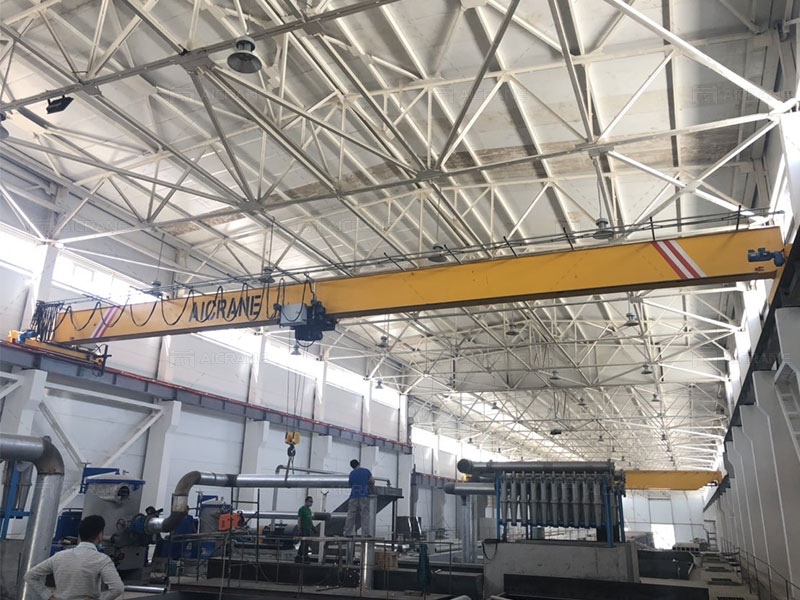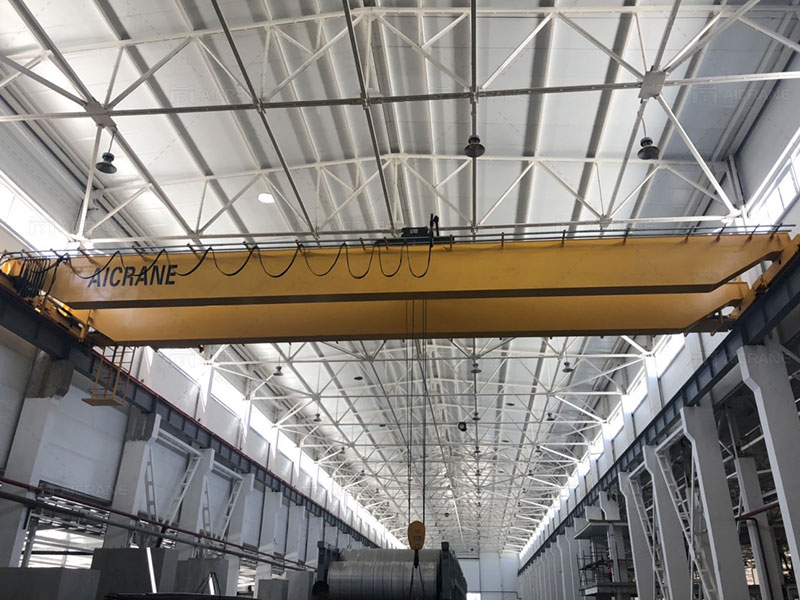Overhead cranes, widely used in industries like manufacturing, construction, shipping, and logistics, are indispensable for lifting heavy loads. These cranes are designed to operate in a variety of environments, from warehouses and factories to outdoor yards. One of the key considerations when purchasing an overhead crane is the lifting capacity. The price of an overhead crane largely depends on its lifting capacity, with 10-ton, 20-ton, 30-ton, 50-ton, and higher capacity cranes being among the most commonly sought-after models.
In this article, we will break down the price range for different lifting capacities and explore the factors that affect the overhead crane price.

1. Understanding Overhead Crane Types
Overhead cranes come in various designs, but the two most common types are single girder and double girder cranes.
-
Single Girder Cranes: These cranes typically have a single horizontal beam and are more cost-effective. They are best suited for light to medium-duty operations (typically up to 20 tons).
-
Double Girder Cranes: With two horizontal beams, double girder cranes are built for heavy-duty lifting, offering more stability and higher capacity (usually 20 tons and above).
The lifting capacity determines the type of crane required, and this directly impacts the pricing.
2. Price Range for 10-Ton Overhead Cranes
A 10-ton overhead crane is one of the most common types in light-duty industries such as small manufacturing facilities, warehouses, and repair shops. These cranes are suitable for lifting moderate loads, and their price is on the lower end compared to cranes with higher capacities.
-
Price Range: The 10 ton overhead crane price generally ranges from $10,000 to $30,000.
-
Factors Influencing Price:
- Design and Configuration: A single girder design will be less expensive compared to a double girder model.
- Control System: Manual controls are cheaper, while remote controls or cabin controls will add to the price.
- Customization: Special features like anti-sway systems, explosion-proof motors, or specialized coatings will increase the cost.
For a basic 10-ton single girder overhead crane, you can expect the price to be at the lower end of the spectrum. However, adding advanced features such as a variable speed drive or anti-collision systems will push the price higher.
3. Price Range for 20-Ton Overhead Cranes
A 20-ton overhead crane is widely used in various industrial sectors, including construction, automotive, and metalworking industries. It is a versatile lifting solution that offers a higher load capacity and can be either a single or double girder crane.
-
Price Range: A 20-ton overhead crane typically costs between $20,000 and $50,000.
-
Factors Influencing Price:
- Work Duty Classification: The crane’s operational duty class (A3, A4, A5) will affect the price. Cranes used for light, moderate, or heavy-duty operations are priced accordingly.
- Span and Lift Height: Larger spans and higher lift heights will increase the cost, as they require stronger structural components and more advanced hoisting mechanisms.
The price variation largely comes from the choice of features, including control systems, lifting height, and the type of crane used.
4. Price Range for 30-Ton Overhead Cranes
A 30-ton overhead crane is a medium to heavy-duty option used in industrial settings that require more robust lifting capacities, such as steel mills, large warehouses, or heavy equipment manufacturing.
-
Price Range: The 30 ton overhead crane price ranges from $30,000 to $70,000.
-
Factors Influencing Price:
- Crane Type: For a 30-ton capacity, a double girder crane is often preferred, which costs more than a single girder crane.
- Control Options: The inclusion of advanced control systems like wireless remote controls or automated operation can increase the cost.
- Operational Environment: Cranes designed for extreme environments (e.g., high temperatures, hazardous areas) will be priced higher due to the need for special materials and safety features.
Customization options, including special paint coatings, steel grades, and load limiters, will also impact the price of a 30-ton crane.

5. Price Range for 50-Ton Overhead Cranes
A 50-ton overhead crane is considered a heavy-duty crane, often used in industries such as steel production, construction, heavy equipment manufacturing, and shipbuilding. The high lifting capacity requires robust engineering and materials, which naturally increases the price.
-
Price Range: The cost of a 50-ton overhead crane generally falls between $50,000 and $120,000.
-
Factors Influencing Price:
- Structural Design: A double girder design is almost always used for these cranes, which provides greater strength and stability but also drives up the cost.
- Automation and Technology: Features such as automatic load balancing, anti-sway systems, and programmable control systems significantly increase the price of the crane.
- Installation and Training: Some suppliers offer package deals that include installation services, operator training, and testing, which can add substantial costs.
For high-capacity cranes, considerations such as energy efficiency, safety features, and longevity also play a crucial role in determining the final price.
6. Price Range for Cranes with Capacities Above 50 Tons
Cranes with lifting capacities above 50 tons are typically used for extremely heavy-duty applications, including the handling of large equipment, offshore oil rigs, or lifting massive steel components. These cranes are often custom-built to meet the specific needs of the customer.
-
Price Range: Cranes with capacities of 100 tons, 150 tons, or more can range anywhere from $100,000 to $500,000 or more, depending on the complexity of the design, materials used, and specific requirements.
-
Factors Influencing Price:
- Customization: Custom-designed cranes that are engineered to meet specific operational needs will always come at a higher cost.
- High-Performance Features: These cranes may come equipped with additional systems like automated operation, redundant safety systems, and heavy-duty motors that increase the price.
- Environment and Application: Cranes used in specialized sectors such as offshore oil platforms, nuclear plants, or heavy industrial production may be subject to stricter safety regulations, leading to higher costs.
7. Other Factors Affecting the Price of Overhead Cranes
In addition to the lifting capacity, several other factors contribute to the overall cost of an overhead crane for sale:
- Material Quality: The quality of materials used in construction, such as high-strength steel or corrosion-resistant coatings, will impact the price.
- Location and Supplier: Different regions may have different pricing due to transportation costs, import duties, and local economic conditions.
- Warranty and After-Sales Support: A comprehensive warranty package and after-sales services like maintenance, repairs, and upgrades can increase the total cost.
Conclusion
When purchasing an overhead crane, it is important to consider both the lifting capacity and the various features that will affect the price. While smaller cranes (10-ton and 20-ton) are more affordable, larger cranes (30-ton, 50-ton, and above) come with higher costs due to their more complex design, advanced features, and heavy-duty construction.
By working closely with a reliable supplier, you can ensure that your crane meets the specific lifting requirements of your business while also staying within budget. Ultimately, the right overhead crane can improve productivity, enhance safety, and streamline operations in your facility, making it a worthwhile investment.